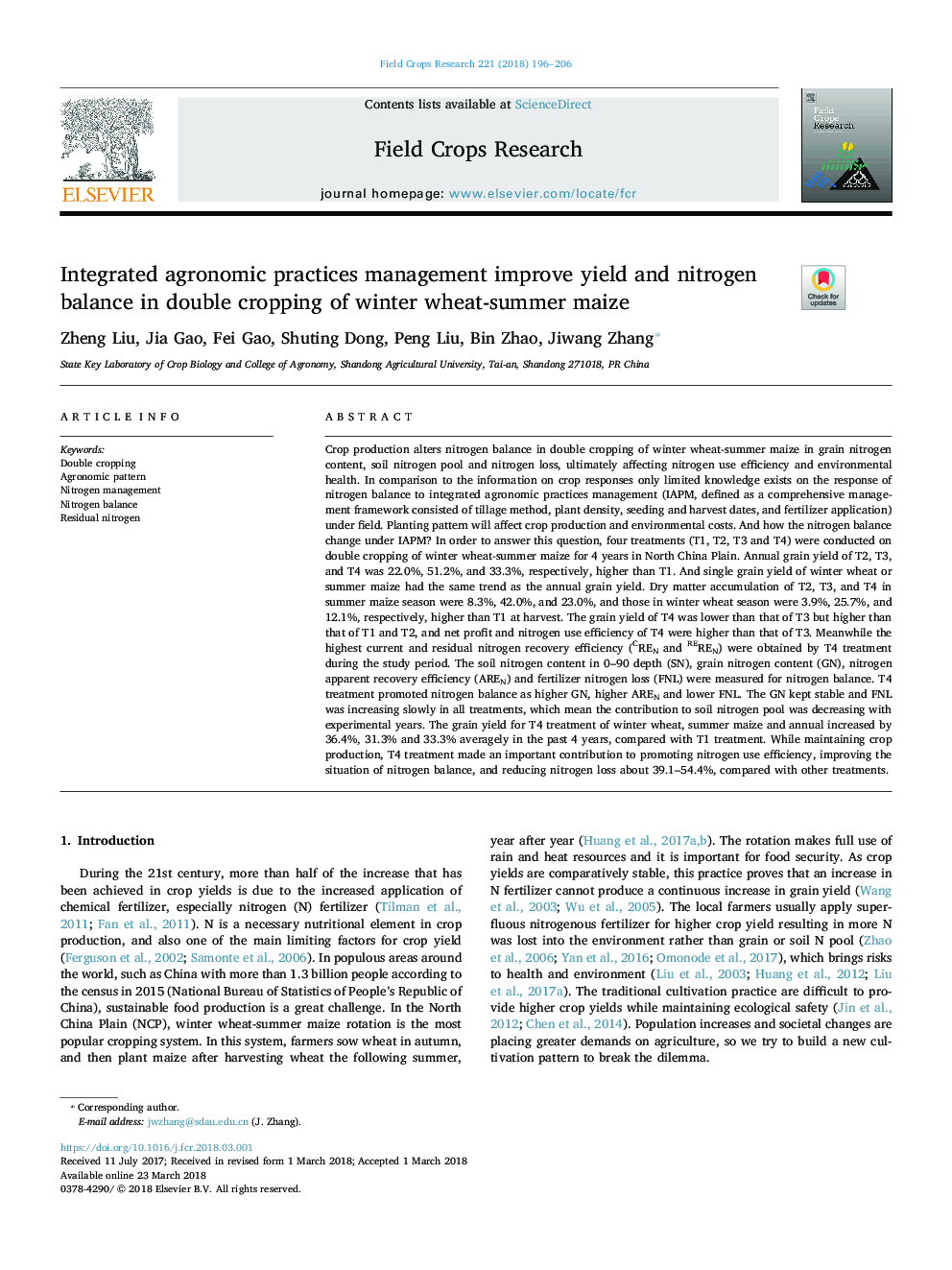| Article ID | Journal | Published Year | Pages | File Type |
|---|---|---|---|---|
| 8879251 | Field Crops Research | 2018 | 11 Pages |
Abstract
Crop production alters nitrogen balance in double cropping of winter wheat-summer maize in grain nitrogen content, soil nitrogen pool and nitrogen loss, ultimately affecting nitrogen use efficiency and environmental health. In comparison to the information on crop responses only limited knowledge exists on the response of nitrogen balance to integrated agronomic practices management (IAPM, defined as a comprehensive management framework consisted of tillage method, plant density, seeding and harvest dates, and fertilizer application) under field. Planting pattern will affect crop production and environmental costs. And how the nitrogen balance change under IAPM? In order to answer this question, four treatments (T1, T2, T3 and T4) were conducted on double cropping of winter wheat-summer maize for 4 years in North China Plain. Annual grain yield of T2, T3, and T4 was 22.0%, 51.2%, and 33.3%, respectively, higher than T1. And single grain yield of winter wheat or summer maize had the same trend as the annual grain yield. Dry matter accumulation of T2, T3, and T4 in summer maize season were 8.3%, 42.0%, and 23.0%, and those in winter wheat season were 3.9%, 25.7%, and 12.1%, respectively, higher than T1 at harvest. The grain yield of T4 was lower than that of T3 but higher than that of T1 and T2, and net profit and nitrogen use efficiency of T4 were higher than that of T3. Meanwhile the highest current and residual nitrogen recovery efficiency (CREN and REREN) were obtained by T4 treatment during the study period. The soil nitrogen content in 0-90 depth (SN), grain nitrogen content (GN), nitrogen apparent recovery efficiency (AREN) and fertilizer nitrogen loss (FNL) were measured for nitrogen balance. T4 treatment promoted nitrogen balance as higher GN, higher AREN and lower FNL. The GN kept stable and FNL was increasing slowly in all treatments, which mean the contribution to soil nitrogen pool was decreasing with experimental years. The grain yield for T4 treatment of winter wheat, summer maize and annual increased by 36.4%, 31.3% and 33.3% averagely in the past 4 years, compared with T1 treatment. While maintaining crop production, T4 treatment made an important contribution to promoting nitrogen use efficiency, improving the situation of nitrogen balance, and reducing nitrogen loss about 39.1-54.4%, compared with other treatments.
Related Topics
Life Sciences
Agricultural and Biological Sciences
Agronomy and Crop Science
Authors
Zheng Liu, Jia Gao, Fei Gao, Shuting Dong, Peng Liu, Bin Zhao, Jiwang Zhang,
